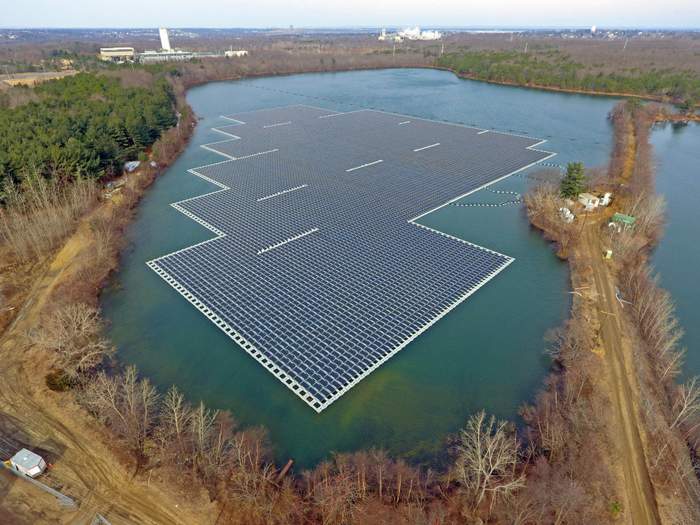DNV GL has launched a collaborative joint industry project (JIP) with 14 industry participants to develop the industry’s first recommended practice (RP) for floating solar power projects. The planned recommended practice (RP) will provide a commonly recognised standard based on a list of technical requirements for developing safe, reliable and sustainable floating solar projects.
Floating solar power is a promising renewable energy technology in which solar panels are installed on floating structures on the surface of suitable bodies of water. The technology offers great potential for green energy production, particularly in areas where there is a shortage of available land for large photovoltaic plants.
Current floating solar market
Following the first projects in 2006, installed capacity for floating solar power was just 10 MW by 2015 but has accelerated considerably since then, reaching 3 GWpeak by the end of 2019. It is estimated that the total global potential capacity for deploying floating solar power on manmade, inland waters alone could be as high as 4 TW.
Obstacles
Despite this huge potential, there are as yet no harmonized standard approaches to developing floating solar power projects and no industry standards to ensure quality. This makes it difficult for investors, regulators and other stakeholders to have confidence in planned projects and to enforce relevant requirements, which could potentially put a break on the technology’s growth.
Responding to the industry’s need, DNV GL launched an initiative to develop a floating solar recommended practice via its industry-based, collaborative JIP (Joint Industry Project) approach. DNV GL has put together an international consortium of leading companies from the offshore, solar and floating structure manufacturing industries.
Meet the team
The Floating Solar JIP consortium features a varied array of companies with extensive experience in the floating solar and related industries. Current members are:
- BayWa r.e. (Ger)
- Blue C Engineering (Ger)
- Carpi Tech/Makor Energy (Swi/Isr)
- Ciel & Terre International (Fra)
- Compagnie Nationale du Rhone (Fra)
- Noria Energy (US)
- EDF – Électricité de France (Fra)
- EDP- Energias de Portugal S.A.(Por)
- Equinor (Nor)
- Isigenere (Spa)
- Mainstream Renewable Power (UK)
- Scatec Solar (Nor)
- Seaflex (Swe)
- Statkraft (Nor)
The plan
The JIP will look at all aspects of developing floating solar projects on inland and inshore waters. It will focus on five key topics: site conditions assessment, energy yield forecast, mooring & anchoring systems, floating structures, permitting and environmental impact. By not limiting itself to any specific floating solar technology, the consortium aims to define requirements and guidelines that can be applied in practical manner to all floating solar projects.
Drawing on existing standards from related sectors, the consortium plans to develop a draft guideline document by the end of 2020. This will be made available for widespread industry consultation before the publication of the verified recommended practice, currently scheduled for Q1 2021.
“The results of the JIP will be a great enabler of floating solar going mainstream, by providing a set of guidelines that will accelerate the development of successful and safe floating solar projects. I encourage all the players in the value chain of the industry to use the recommended practice when it will be published,” added Andrés Franco, CEO of Isigenere.
— Solar Builder magazine

 , SunModo’s newest solar mounting innovation. Learn more here.
, SunModo’s newest solar mounting innovation. Learn more here.
Leave a Reply
You must be logged in to post a comment.